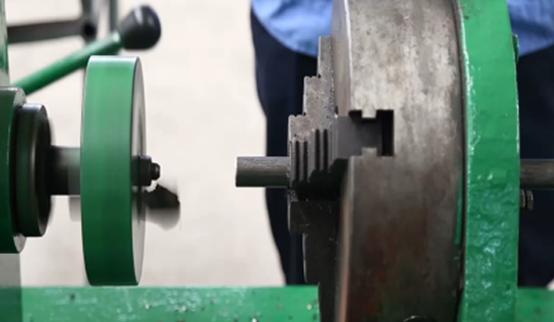 Afrikaans
Afrikaans  Albanian
Albanian  Amharic
Amharic  Arabic
Arabic  Armenian
Armenian  Azerbaijani
Azerbaijani  Basque
Basque  Belarusian
Belarusian  Bengali
Bengali  Bosnian
Bosnian  Bulgarian
Bulgarian  Catalan
Catalan  Cebuano
Cebuano  Corsican
Corsican  Croatian
Croatian  Czech
Czech  Danish
Danish  Dutch
Dutch  English
English  Esperanto
Esperanto  Estonian
Estonian  Finnish
Finnish  French
French  Frisian
Frisian  Galician
Galician  Georgian
Georgian  German
German  Greek
Greek  Gujarati
Gujarati  Haitian Creole
Haitian Creole  hausa
hausa  hawaiian
hawaiian  Hebrew
Hebrew  Hindi
Hindi  Miao
Miao  Hungarian
Hungarian  Icelandic
Icelandic  igbo
igbo  Indonesian
Indonesian  irish
irish  Italian
Italian  Japanese
Japanese  Javanese
Javanese  Kannada
Kannada  kazakh
kazakh  Khmer
Khmer  Rwandese
Rwandese  Korean
Korean  Kurdish
Kurdish  Kyrgyz
Kyrgyz  Lao
Lao  Latin
Latin  Latvian
Latvian  Lithuanian
Lithuanian  Luxembourgish
Luxembourgish  Macedonian
Macedonian  Malgashi
Malgashi  Malay
Malay  Malayalam
Malayalam  Maltese
Maltese  Maori
Maori  Marathi
Marathi  Mongolian
Mongolian  Myanmar
Myanmar  Nepali
Nepali  Norwegian
Norwegian  Norwegian
Norwegian  Occitan
Occitan  Pashto
Pashto  Persian
Persian  Polish
Polish  Portuguese
Portuguese  Punjabi
Punjabi  Romanian
Romanian  Russian
Russian  Samoan
Samoan  Scottish Gaelic
Scottish Gaelic  Serbian
Serbian  Sesotho
Sesotho  Shona
Shona  Sindhi
Sindhi  Sinhala
Sinhala  Slovak
Slovak  Slovenian
Slovenian  Somali
Somali  Spanish
Spanish  Sundanese
Sundanese  Swahili
Swahili  Swedish
Swedish  Tagalog
Tagalog  Tajik
Tajik  Tamil
Tamil  Tatar
Tatar  Telugu
Telugu  Thai
Thai  Turkish
Turkish  Turkmen
Turkmen  Ukrainian
Ukrainian  Urdu
Urdu  Uighur
Uighur  Uzbek
Uzbek  Vietnamese
Vietnamese  Welsh
Welsh  Bantu
Bantu  Yiddish
Yiddish  Yoruba
Yoruba  Zulu
Zulu Understanding the Function and Design of Conveyor Tail Drums in Material Handling Systems
Understanding the Conveyor Tail Drum An Essential Component in Material Handling Systems
In the realm of material handling and industrial operations, the conveyor system is a pivotal player. Among its critical components, the conveyor tail drum holds significant importance. The tail drum, or tail pulley, is situated at the end of a conveyor belt system and plays a crucial role in the overall functioning and efficiency of the conveyor. This article delves into the features, functions, and importance of the conveyor tail drum, while also highlighting its maintenance and troubleshooting aspects.
What is a Conveyor Tail Drum?
A conveyor tail drum is a cylindrical component mounted on a supporting structure at the end of a conveyor belt. It serves two primary functions supporting the tension of the belt and facilitating its movement. The drum is usually powered by a drive mechanism that enables the conveyor belt to transport materials from one point to another, effectively aiding in logistics and production processes across various industries including mining, manufacturing, and logistics.
Functions of the Tail Drum
The tail drum is essential for several reasons
1. Belt Tensioning The tail drum helps maintain appropriate tension on the conveyor belt. Proper tension is crucial for preventing slippage and ensuring that the belt operates smoothly. Over time, wear and tear can affect the tension, which is where adjustable tail drums come into play, allowing for tension adjustments to accommodate changes in the belt system.
2. Belt Support As the conveyor belt travels over the tail drum, it requires a sturdy support to prevent sagging or misalignment. The tail drum provides this support, allowing the material to be transported effectively without disruptions.
3. Material Loading and Unloading In many conveyor systems, the tail drum is integral to the loading and unloading process. It helps in guiding the materials onto the belt and, as the belt moves, it ensures that the materials remain in place without spilling or scattering.
4. Alignment and Control The tail drum aids in keeping the conveyor belt aligned. Misalignment can lead to numerous issues, including excessive wear on components and inefficiency in material transport. A well-functioning tail drum contributes to maintaining the straight path of the conveyor belt.
Importance of Maintenance
Like any mechanical component, the conveyor tail drum requires routine maintenance to ensure optimal performance
. Regular inspection and servicing can help identify potential issues such as wear, misalignment, or damage caused by the environmental conditions in which it operates.conveyor tail drum

Key maintenance practices include
- Regular Inspections Check for signs of wear and tear, as well as proper alignment. Assess the condition of the bearing and seals.
- Lubrication Ensure that the bearings are lubricated adequately to reduce friction and wear.
- Tension Checks Monitor and adjust the tension on the conveyor belt regularly to prevent slippage or premature wear.
- Replacing Worn Components Timely replacement of worn drum covers or bearings is crucial to avoid the breakdown of the entire conveyor system.
Troubleshooting Common Issues
Operators should be aware of common issues that may arise with the conveyor tail drum, such as
- Belt Slippage If the conveyor belt is slipping on the tail drum, it can often be resolved by adjusting the tension or checking for debris that may be affecting grip.
- Noise and Vibration Increased noise or vibration may indicate that the bearings are worn or that there is an alignment issue. Regular checks can help detect these problems early.
- Excessive Wear If the drum shows excessive wear, it may be a sign that the conveyor is overloaded, or there are underlying issues with the material being transported.
Conclusion
The conveyor tail drum is a fundamental element in the functioning of conveyor systems, impacting efficiency, safety, and operational success. Understanding its role and ensuring proper maintenance can lead to improved performance and longevity of the conveyor system. As industries continue to rely on automated material handling processes, the importance of components like the tail drum cannot be overstated. By investing in installation, maintenance, and troubleshooting, companies can optimize their operations and ensure seamless material flow throughout their facilities.
-
Revolutionizing Conveyor Reliability with Advanced Rubber Lagging PulleysNewsJul.22,2025
-
Powering Precision and Durability with Expert Manufacturers of Conveyor ComponentsNewsJul.22,2025
-
Optimizing Conveyor Systems with Advanced Conveyor AccessoriesNewsJul.22,2025
-
Maximize Conveyor Efficiency with Quality Conveyor Idler PulleysNewsJul.22,2025
-
Future-Proof Your Conveyor System with High-Performance Polyurethane RollerNewsJul.22,2025
-
Driving Efficiency Forward with Quality Idlers and RollersNewsJul.22,2025





























